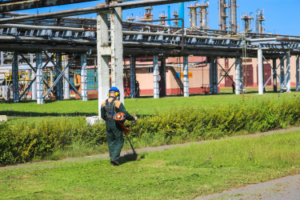The damage a fire can cause both financially and to human life can be devastating.
This is why when owning any sort of property, you should have every precaution possible in place to minimise the risk of this happening as well as providing ways of reducing damage if one does break out.
It is one thing having a couple of smoke alarms in your own home, but because you are responsible for other lives when leasing property, the regulations for rental flats and homes are much stricter as it is part of a legal obligation to keep your tenants safe.
What are the regulations landlords must abide by when it comes to fire safety and what can be done to meet them?
Fire detectors
The law is in full force when it comes to fire detectors. Landlords are required to have at least one smoke alarm on each floor of a property. Furthermore they must have carbon monoxide detectors in place in any room with a solid fuel burning appliance e.g. a stove. This is all part of The Smoke and Carbon Monoxide Alarm (England) Regulations 2015.
Some places also recommend having a heat detector in the property (something the London Fire Brigade like to enforce) but this is not part of the law or absolutely essential. Regardless, it is always better to be overly cautious when it comes to safety so we would also recommend looking into every possible avenue surrounding detectors.
Fire-safe furniture and appliances
Furniture must be fire resistant in line with what is stated in The Furniture and Furnishings Fire Safety Regulations. You’ll know if a piece of furniture is fire safe because they will usually have a label somewhere on it saying that it has been successfully checked. However, it is always good to check and make sure all your furniture is made of the correct resistant materials and meets the safety standards.
As for appliances, it is a bit more obvious, but gas and electrics should be thoroughly checked for any faults which could lead to a fire. A certificate for gas safety should be produced every year whilst an electrical one should be produced every five years, although that doesn’t mean it can’t and shouldn’t be checked more frequently, especially with the knowledge that either of these could contribute to a fire if faulty.
Exits
If your property includes a number of flats/residents then it is likely that you’ll have to have some sort of fire exit. Fire doors are essential, and although they look like regular doors, they are thoroughly tested and deemed to meet standards which would help drastically in a fire situation.
There must be clear access to all stairways and corridors as well as emergency lighting in these areas map out a route in a situation where other lighting may not be working or compromised. Every flat/room/floor should be able to find their way to an exit safely, and that is the responsibility of the landlord. You should also have clear instructions on display in the communal areas of what to do in case of a fire.
The more complex the block or building the stricter these rules become. With something like this it is always worth carrying out a full risk assessment, which we will cover a little later.
Combative measures
Fire extinguishers are required for each floor of a shared property, and they should be checked every year to see if they are in good working order. They should also be assessed at the start of a new tenancy.
Every kitchen in any shared living space is also required to have a fire blanket, while clear instructions should be provided to tenants on how and when to use both the blanket and the extinguisher. Extinguishers aren’t always the best way to put out a fire, so it is good to educate yourself and your tenants on the best ways to utilise them in an emergency.
Risk assessments and inspections
Once all of this is in place the best way to ensure that your property is as safe as it can be and to the letter of the law you should get a qualified individual to carry out a thorough fire inspection to assess it. Firstly, it is always better to have a second pair of eyes looking at everything just in case you’ve missed something. Secondly, it is always better to have a professional look at a property in this way as they may spot something that you otherwise may not have.
Assessments should ideally take place twice annually as well as before any new tenants move into the property. They should be thorough, looking at all the potential fire hazards, the people at risk and identify a clear emergency plan should things go wrong.
Although there are a number of ways you can go about getting a fire risk assessment, most fire and rescue services, as part of their “Safe and Well” scheme, now offer a free fire risk assessment service which could be something to consider.




